Facilitated by Walter Sorochan Emeritus Professor San Diego State University
Posted April 17, 2014; updated November 13, 2021. Disclaimer
Several countries, Germany, Denmark, France and China, have passed legislation to change from their old polluting electricity
systems to the sun's never ending and abundant clean energy source! This new energy idea is predicated on being aware that we need to get energy directly from the sun and not from fossil fuels or nuclear uranium power plants. There is no doubt that Solar alone could power the world: The solar energy that falls on the
earth every minute is more than the amount of fossil fuel the world uses every year. Wind alone could provide about 15 times the world's energy demand. Just as the internet allows you to send and receive
information in a horizontal connection, so too, the future smart grid can do the
same by sharing electricity across millions of homes. Such a horizontal connection [ of many ] is referred to as a
lateral connection. It is different from the vertical connection of only a few
persons or buildings. This is illustrated in the diagram below: The major advantage of this lateral grid system is that it
displaces the current expensive archaic vertical electric systems of 'middle men' using fossil fuels to generate electricity.
Instead, it harnesses the abundant clean energy of the sun with millions of
others by way of the internet. This lateral smart grid system interfaces wind and solar
generating systems in a sustainable and very cost efficient grid manner that can
also make drinking water from ocean water.
Solar energy is the future! We live in a whole new world of electricity and our world will get more
complicated. We need to learn the simple basics of electricity and acquire
a little bit more understanding about how we might be able to harness the sun's energy in the next 20 years. Step #1: is to understand electricity. Electricity is the movement of
charged particles called electrons. There are three words that help us
understand electricity: VOLTS AMPS
WATTS Watts is expressed as work done in the illustration on the right; 100 watts needed to light up a light bulb. The electric power in watts represents the rate at which energy is converted
from electrical energy to some other form of energy, e.g., mechanical energy, heat, light, etc. In the international system P is measured in Watts, V in volts and I in Amps. Home electricity amount needed/used: The electric company measures how much electricity you use in
kilowatt-hours, abbreviated kWh or Kwatt-hours. The amount of solar energy a house needs depends on:
1. How much power the house consumes on average; 2. Where the house is located [so you can calculate mean solar days, average rainfall, etc.].
Solar panels needed
Average house that is 1600-2000 square feet and having electric appliances except for the furnace
is estimated to use an average of about 1500Kwatt-hours per month; need to make
about 50 Kwatt-hours per day and a total of 18,000 Kwatt-hours per year. Step 2: become acquainted with solar power. You can do this by viewing Solar Power as Independent energy Step 3: Grasp Jeremy Rifkin's concept of the Third Revolution and that the world is very quickly changing.
Rifkin describes how the five pillars of the Third Industrial Revolution will create thousands of businesses and millions of jobs, and usher in a fundamental reordering of human relationships, from hierarchical to lateral power, that will impact the way we conduct business, govern society, educate our children, and engage in civic life.
Germany and Europe are the world leaders in converting from fossil fuels and nuclear power to solar power.
The video below explains how they are doing it. Solar power in Germany Length 48 mns.
“Electricity is where the telecommunications industry was 30 years ago: a lot of pent-up innovation and a regulated monopoly business model which lacks the incentive to innovate.”
Bob Galvin, the retired CEO of Motorola and leader of the cell phone revolution, so wisely observed back in 2005. Galvin: Electric revolution

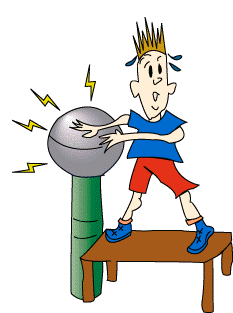 Since you use electricity, you live in an electric world. You need to become better informed about two topics:
electricity and solar energy. It is more than just plugging into an outlet
or turning a switch on.
Knowing a little about electricity is now a survival skill as important as knowing which foods to eat,
staying healthy, the "3-R's" and job skills. You cannot continue to be uninformed and expect to survive in the new world of electricity.
Since you use electricity, you live in an electric world. You need to become better informed about two topics:
electricity and solar energy. It is more than just plugging into an outlet
or turning a switch on.
Knowing a little about electricity is now a survival skill as important as knowing which foods to eat,
staying healthy, the "3-R's" and job skills. You cannot continue to be uninformed and expect to survive in the new world of electricity.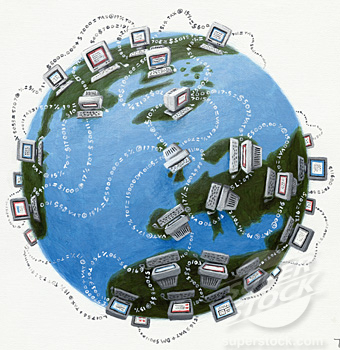 This article presents essential information about electricity, solar energy and links all this information to
economist Jeremy Rifkin's ideas of streamlining energy grids and
lateral home-office solar units with the internet. Rifkin: Internet of things 2014
Rifkin: Third revolution The most cost effective and non-polluting way to supply the electricity needs of
the entire world is to get it from the sun. Scientists and engineers have designed the new electric system of the future similar to how the world internet highway is designed [ illustrated by the image on the left ].
This article presents essential information about electricity, solar energy and links all this information to
economist Jeremy Rifkin's ideas of streamlining energy grids and
lateral home-office solar units with the internet. Rifkin: Internet of things 2014
Rifkin: Third revolution The most cost effective and non-polluting way to supply the electricity needs of
the entire world is to get it from the sun. Scientists and engineers have designed the new electric system of the future similar to how the world internet highway is designed [ illustrated by the image on the left ]. 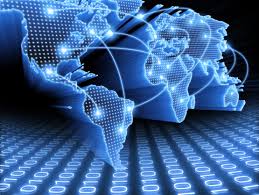 Rifkin advocates decentralizing today's centralized power grid system by having
homeowners install solar panels that would be connected by way of the internet into a
super smart grid. The smart grid allows sharing of solar and wind ] energy with others in a manner
similar to how the internet connects with others around the world. Not a few people but millions in a country and the world!
Rifkin advocates decentralizing today's centralized power grid system by having
homeowners install solar panels that would be connected by way of the internet into a
super smart grid. The smart grid allows sharing of solar and wind ] energy with others in a manner
similar to how the internet connects with others around the world. Not a few people but millions in a country and the world!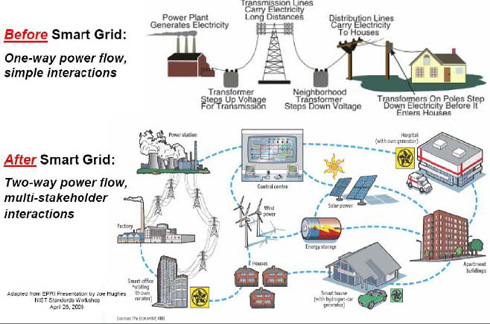

Volts = the pressure needed to push electrons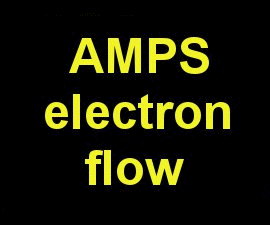 Amps = flow through of electrons
Amps = flow through of electrons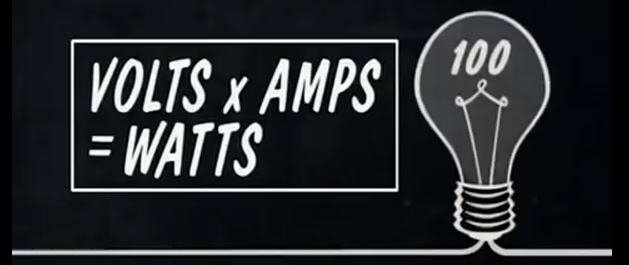 Watts = Amount of current used [ also referred to as work ]
Watts = Amount of current used [ also referred to as work ]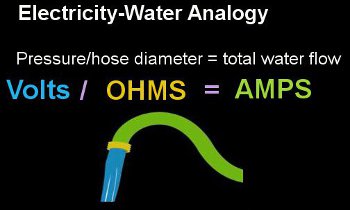 The water-hose analogy is another good way to help us understand electricity. Think of voltage
[volts] as water pressure, hose size [resistance] as ohms and Amps as outflow of water.
The water-hose analogy is another good way to help us understand electricity. Think of voltage
[volts] as water pressure, hose size [resistance] as ohms and Amps as outflow of water. ![]() We use watts to see how hungry a device is for power. [e.g., 100-watt bulb
is twice as hungry as a 50-watt bulb.]
We use watts to see how hungry a device is for power. [e.g., 100-watt bulb
is twice as hungry as a 50-watt bulb.]
![]() We use watt-hours to see how much electricity we used over a period of time. That's what we're paying for.
Electricity is much more complicated than this, but this will suffice for now.
We use watt-hours to see how much electricity we used over a period of time. That's what we're paying for.
Electricity is much more complicated than this, but this will suffice for now. "The five pillars of the Third Industrial Revolution are (1) shifting to renewable energy; (2) transforming the building stock of every continent into green micro–power plants to collect renewable energies on-site; (3) deploying hydrogen and other storage technologies in every building and throughout the infrastructure to store intermittent energies; (4) using Internet technology to transform the power grid of every continent into an energy internet that acts just like the Internet (when millions of buildings are generating a small amount of renewable energy locally, on-site, they can sell surplus green electricity back to the grid and share it with their continental neighbors); and (5) transitioning the transport fleet to electric plug-in and fuel cell vehicles that can buy and sell green electricity on a smart, continental, interactive power grid."
Rifkin:
Third revolution
Rifkin: Internet of things 2014
For more information about Rifkin and how the world is changing today
Source: Solar Power Revolution
Step 4: Finally, you should become just a little familiar with how solar panels and how solar energy works. Although the videos below illustrate how to build your own solar panels and solar system from scratch, the videos are included merely to enhance your understanding of solar energy. Below are several UTube videos on the subject:
A guided tour of solar power system and how it turns sunlight into power for your outlets:
[ 29 mns long ]
Source: Shock: solar fundamentals1
Build your own solar system 29 mns.: [ At your own risk
]
Patrick: build solar panel 1
Conclusion: Cost effective technology to harness solar energy is being used in all parts of the world today on a small scale. Millions of homes and office buildings are no longer using fossil fuels or nuclear power to generate electricity. Solar power is a reality!
Barriers to change: The utility providers, politicians and consumers are the problem: The barriers to reform are the product of an industry that understandably guards its vested interests and a public that, lacking clearly articulated alternatives, does not yet realize anything is wrong. A Harris Interactive poll conducted in January 2010 found that roughly two-thirds of Americans had never even heard of a “smart grid” or “smart meters.” While the same number agreed that they would cut their energy use if they were capable of tracking it, 42 percent were simply unable to either agree or disagree with the statement: “The electricity system is fine the way it is and a smart grid is not necessary.” Galvin: Electric revolution
Utility companies today are figuring out how to improve existing electric grids. Fehrenbacher: Internet energy 2011 Futurist Ray Kurzweil predicts solar will power the world in 16 - 20 years! Kurzweil calls the "law of accelerating returns;" a continual doubling of capability [exponentially] occurs about every year. Such acceleration evolves a tipping point at which energy from solar panels is now actually becoming less expensive than fossil fuels.
University of Delaware Study 2013: Summary: "Renewable energy could fully power a large electric grid 99.9 percent of the time by 2030 at costs comparable to today's electricity expenses, according to this new research. A well-designed combination of wind power, solar power and storage in batteries and fuel cells would nearly always exceed electricity demands while keeping costs low, scientists found." Budischak Feasibility study for USA2013
Jacobson and Delucchi: "The barriers to a totally renewably-powered world are social and political, not technological or economic. And those barriers are falling fast." Nelder: Renewable power 2012 Jacobson: Practical expectations 2011
Utility corporations defend their current polluting systems and spread misinformation in their attempts to postpone the inevitable. Fossil energy is killing us!! But why would these 'parents and grandparents' want to self-destruct and delay creating a safer place for themselves and their families?
References:
Budischak Cory, DeAnna Sewell, Heather Thomson, Leon Mach, Dana E. Veron, Willett Kempton, "Cost-minimized combinations of wind power, solar power and electrochemical storage, powering the grid up to 99.9% of the time," Journal of Power Sources, Volume 232, 15 June 2013, Page 402. Budischak Feasibility study for USA2013
Cleveland Cutler J., "Energy Quality, Net Energy, and the Coming Energy Transition," Cleveland: coming energy transition
Dall Ray, "Fundamentals of electricity Electronics 101," Dall: electricity
Fehrenbacher Katie, "The Internet of Things and energy," GigaOM, October 10, 2011. Fehrenbacher: Internet energy 2011
Galvin Bob, "An Electric Revolution, Chapter One: A 1776 of Energy," Galvin Electricity Initiative. Galvin: Electric revolution
"The Galvin Electricity Initiative is leading a campaign to transform our nation’s power system into one that truly meets our needs for reliable, efficient, clean electricity service. The imperfect quality of power service today robs each American household of thousands of dollars a year, and the transformation of service quality to 21st century digital standards is critical to resolving the serious economic and environmental threats facing our nation. The Initiative believes that these threats can only be resolved if we shift to a new industry paradigm that is consumer-centric and driven by entrepreneurial innovation and smart technology."
How Stuff Works, "How many solar cells would I need in order to provide all of the electricity that my house needs?" Solar panels needed
Jacobson Mark Z., and Mark A. Delucchib, "Providing all global energy with wind, water, and solar power, Part I: Technologies, energy resources, quantities and areas of infrastructure, and materials," Energy Policy, Part 1: Volume 39, Issue 3, March 2011, Pages 1154–1169. Jacobson: Practical expectations 2011 Part 2: Volume 39, Issue 3, March 2011, Pages 1154–1169
Kurtscottage, "Homemade Solar Panels Diy tutorial, complete build," UTube, Aug 12, 2012. Kurt: Homemade solar panel
Lorton Martin, "How to Solar Power Your Home / House #1 - On Grid vs Off Grid, UTube, Sep 11, 2012. [ Length 25 mns. ] Lorton: Solar power homes
Nelder Chris, "Coming soon: 100% renewable power," Smart Planet, December 11, 2012. Nelder: Renewable power 2012
Obxsolwind, "Choosing batterys for solar power offgrid or a battery backup system," UTube, Sep 19, 2010., Length 10 mns. Obxsolwind: solar battery
Patrick Mark, "How to Build a Solar Panel - Part 1 of 3 (New)step by step buying...," UTube, Part 1: Length 13 mns., Patrick: build solar panel 1 Part 2: Length 5.32 mns., Patrick: part 2 Part 3: Length 10 mns., Patrick: Part 3
Rifkin Jeremy is the author of The Zero Marginal Cost Society: The Internet of Things, the Collaborative Commons, and the Eclipse of Capitalism. Rifkin is an advisor to the European Union and to heads of state around the world, and is the president of the Foundation on Economic Trends in Washington, DC. For more information, please go to www.thezeromarginalcostsociety.com
Rifkin Jeremy, "The Internet of Things: Monopoly Capitalism vs. Collaborative Commons," The Huntington Post, April 04, 2007. Rifkin: Internet of things 2014
Rifkin Jeremy, "The third revolution, powered by oil and other fossil fuels, is spiraling into a dangerous end game." Article by Rifkin: Third revolution is no longer active.
Shock Drew, "Solar Power (From Sunlight To Outlet)," UTube, Nov 17, 2011. Shock: solar fundamentals1
Smart Grids: "In the next generation electrical grid, or "smart grid", there will be many heterogeneous power generators, power storage devices and power consumers. This will include residential customers who traditionally are only part of the ecosystem as consumers, but will in the foreseeable future increasingly provide renewable energy generation through photovoltaics and wind energy and provide energy storage through plug-in hybrid vehicles. What makes this electrical grid "smart" is the capability to insert a vast number of sensors and actuators into the system. This allows a wide variety of information about all the constituents to be collected and various aspects of the electrical grid to be controlled via advanced electric meters, smart appliances, etc. Information gathered consists of e.g. amount of energy use, planned energy consumption, efficiency and status of equipment, energy generation costs, etc and this information is then used by all constituents to optimize certain objectives. This necessitates communication and information technology to transmit and process this information. The goal of this project is to focus on the optimization of local objectives in a smart grid. In particular, we study various centralized and decentralized optimization algorithms to determine the optimal matching and maintain stability between energy producers, energy storage, and energy consumers all connected in a complex and dynamic network." October 06, 2011. Article by Univ Minnesota: Smart Grid is no longer active.
US Energy Information Administration, "How much electricity does an American home use?" USEIA: home use "In 2012, the average annual electricity consumption for a U.S. residential utility customer was 10,837 kWh, an average of 903 kilowatthours (kWh) per month. Louisiana had the highest annual consumption at 15,046 kWh and Maine the lowest at 6,367 kWh."